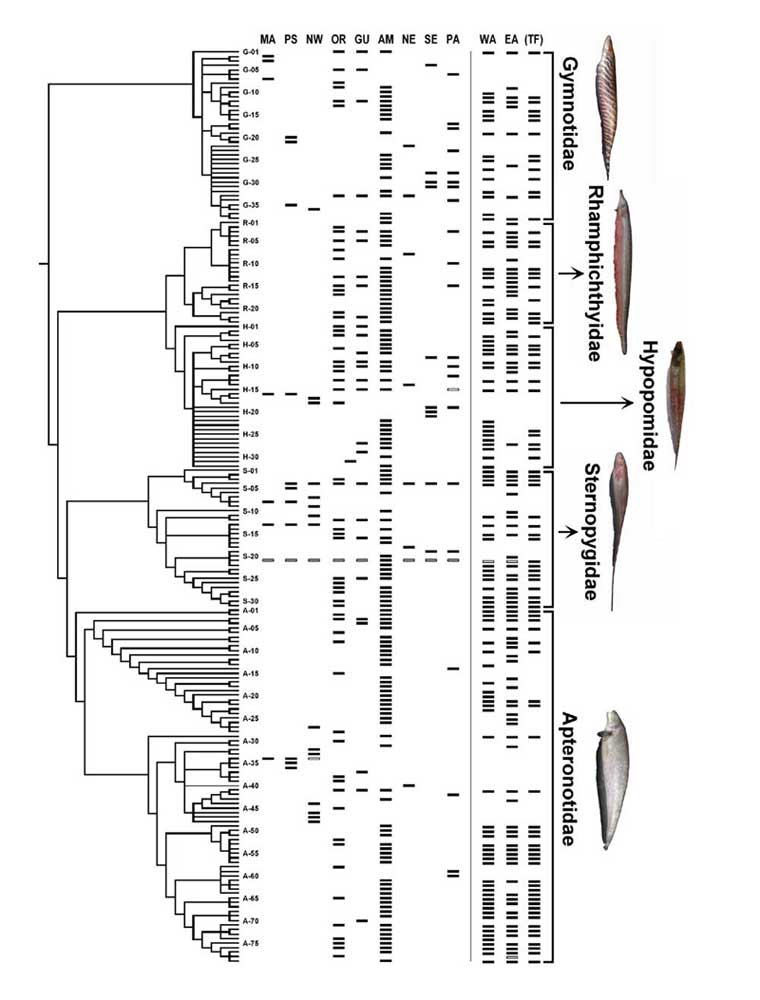Phylogenetic systematics |
|||||||||||||||||||||||||
|
Click on image for larger view. |
|||||||||||||||||||||||||
 |
|||||||||||||||||||||||||
|
A phylogeny of the Neotropical Electric fishes
|
|||||||||||||||||||||||||
|
The products of biodiversity are collected from the wild, but biodiversity itself is studied and documented in the lab. |
|||||||||||||||||||||||||
|
Biosystematics the study of the evolutionary relationships among organisms. Phylogenetic systematics, also called Cladistics, is a method of inferring the evolutionary relationships of species or higher taxa by the presence of shared derived characters (i.e. synapomorphies). Phylogenetic systematics is the way biologists reconstruct the history of transformations that have resulted in the distribution and diversity of life. Systematics, then, is nothing less than the study of the history of all life. Evolution is a continuing process and living populations may undergo change each and every generation. Yet the current time horizon is but a moment in the great span of geological time and almost all evolutionary transformations occurred in the past. Naturally these events cannot be reproduced in the laboratory. Evolutionary biology is like geology and astronomy in being an historical, rather than an hypothetico-deductive science. Clues to the unique series of events which resulted in the diversity of life may be observed in all aspects of their biology. Systematic biologists use information from comparative morphology (anatomy), physiology, behavior, cellular biology, and chromosomes, as well as several aspect of molecular 'morphology', including protein and gene sequences. Systematics is an active area of research, and there are many methods available for collecting and analyzing comparative data. |
|||||||||||||||||||||||||
| Home | Research | Teaching | People | Publications | In the Lab | ||||||||||||||||||||